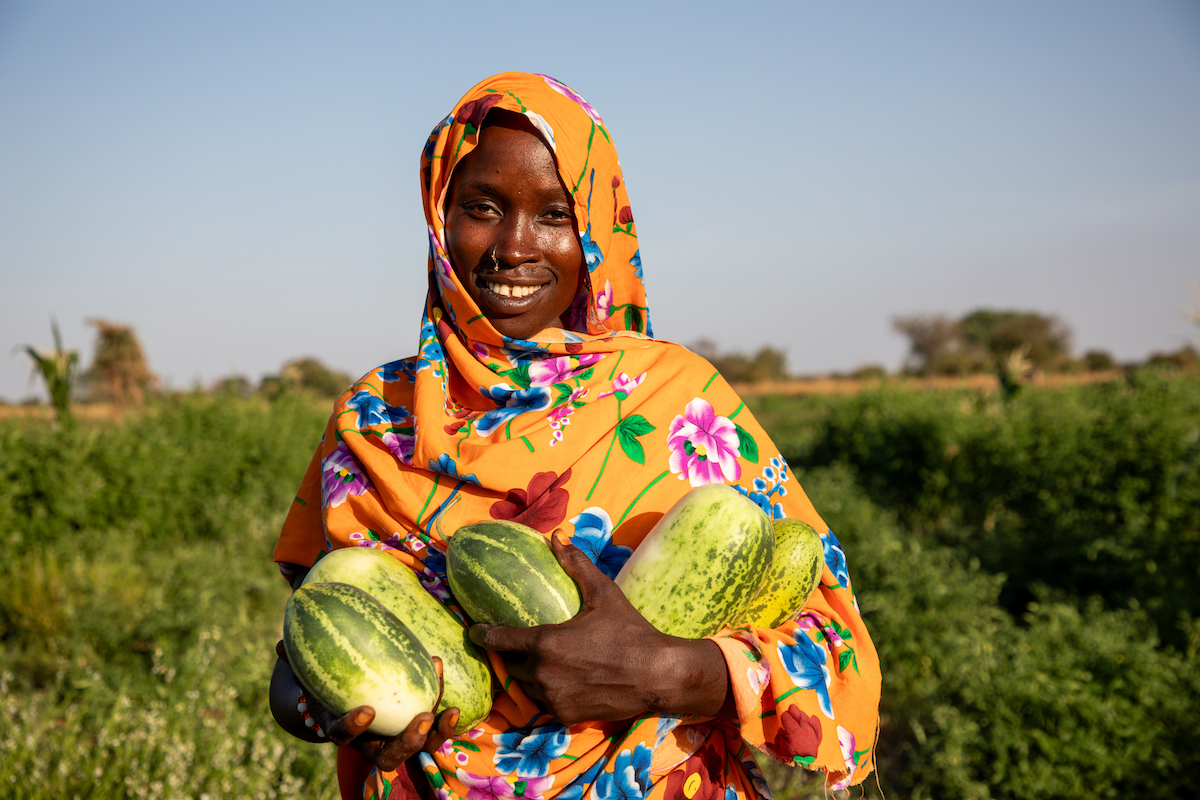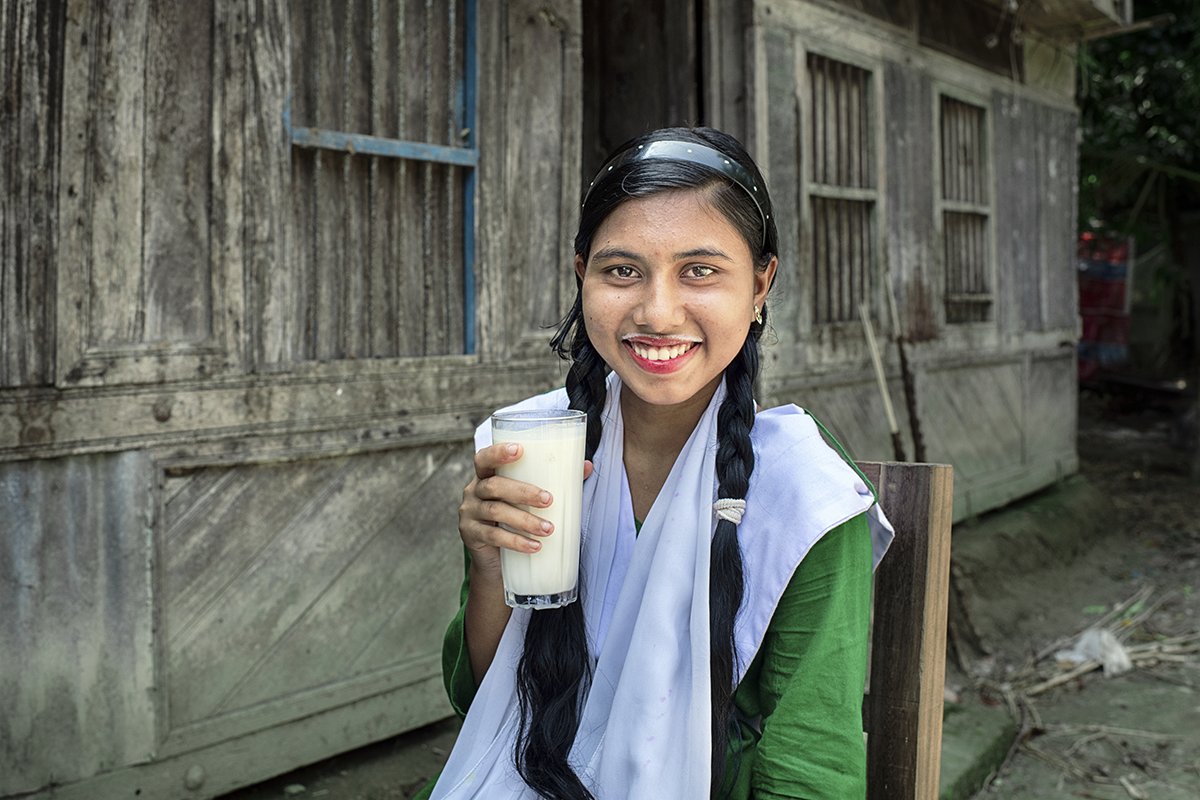News
These are the hungriest countries in the world in 2024
Produced annually by Concern Worldwide and Welthungerhilfe, the Global Hunger Index examines the available data for hunger levels around the world.
Read MoreFirst celebrated in 1979, World Food Day takes place annually on October 16 and promotes awareness of hunger and action for the future of food, people, and the planet.
Here’s what you need to know about the holiday’s significance and history, how Concern is marking World Food Day 2024, and how you can get involved.
This year’s World Food Day theme is: “Right to foods for a better life and a better future.”
The world produces enough food to feed all its inhabitants, and food is recognized as the third most basic human necessity (after air and water), as well as a basic human right under the UN’s Universal Declaration of Human Rights and two legally-binding international covenants.
Yet hunger still persists for 10% of the global population. Moreover, having access to something isn’t enough. With this year’s World Food Day theme, the Food and Agriculture Organization is calling for the right to a diverse and nutrient-rich diet that is affordable, accessible, and safe — for everyone.
Here are a few ways that this year’s World Food Day theme resonates in some of the countries where Concern works.

Chad continually ranks among the hungriest countries in the world, owing in part to a combination of conflict and climate change. Concern has recently launched Concerted and Inclusive Development in the Lake Province (DECILAC), a groundbreaking project supported by Facilité G5 Sahel.
Centered in the country’s Lac Province, the project is focused on inclusively investing in food security and strengthening local value chains. We’re working with communities to build both financial and climate resilience, while also fostering a diversity of diets through redeveloping agricultural polders and constructing fish markets. We’re also supporting these forms of dietary diversity through Chronic Humanitarian Crisis, an Irish Aid-funded program supporting market gardening and artisanal fishing groups.

In Sierra Leone, a new initiative called Yoti Yoti has been designed to help build food and nutrition security through equitable and climate-smart food systems. The five-year project is funded by Irish Aid under Ireland’s Civil Society Partnership for a Better World (ICSP) and focuses on creating availability, access, utilization, and stability of food sources.
The outcomes include inclusive participation in Climate Smart Agriculture, better market access for those living in extreme poverty, stable consumption of an adequate and affordable diet, and generating evidence to help inform policy at the local and national level. We aim to reach 21,000 people with this initiative, which we’re running across 64 communities in the Tonkolili and Port Loko districts. In the first year of the project, we reached nearly 9,500.

With 75% of the country sitting below sea-level, Bangladesh is one of the countries most vulnerable to the effects of climate change, for those living below the poverty line. Concern recently led a multi-year consortium project (in partnership with WaterAid Bangladesh, Rupantar, and Jagrata Juba Shangha) to create an innovative and scalable nutrition governance model.
Collective Responsibility Action and Accountability for Improved Nutrition (CRAAIN) took a community-based and intersectional approach to undernutrition in key areas. Through consultation and group meetings as well as practical training and supplies, low-income families were able to improve their diets and grow a wider range of nutritious fruits and vegetables in their yards. In addition to healthy food, participants learned about health and hygiene, gender, and social safety issues. Between 2020 and 2023, CRAAIN reached nearly half a million people.
The proverbial “now-more-than-ever” applies to World Food Day’s importance. Initially established to mark the anniversary of the founding of the Food and Agriculture Organization, World Food Day goes hand-in-hand with the FAO’s mission to end world hunger and improve the standard of living for people living in rural areas.
It also goes hand-in-hand with the missions of organizations that work with the FAO, like Concern. October 16 is a touchpoint for NGOs — and for the world; a reminder that hunger, food insecurity, and malnutrition are among the most pressing issues of our time, and getting worse the closer we get to the 2030 goal of Zero Hunger.
Concern’s annual Global Hunger Index, co-published with Welthungerhilfe, will launch on October 10 this year, just before World Food Day. An award-winning “report card” for world hunger, the GHI measures hunger based on four key indicators: Undernourishment, child wasting, child stunting, and child mortality rates.
With the GHI also comes our annual ranking of the hungriest countries in the world — countries with the highest GHI scores indicating strong levels of hunger and malnourishment. We also offer takeaways and policy recommendations, based on each year’s data, to help global progress towards Zero Hunger.
World Food Day is a great reason to learn more about the state of world hunger in 2024. In addition to checking out the GHI and our top 10 hungriest countries, linked above, see below for a few other resources that you can read and share today (and every other day!).